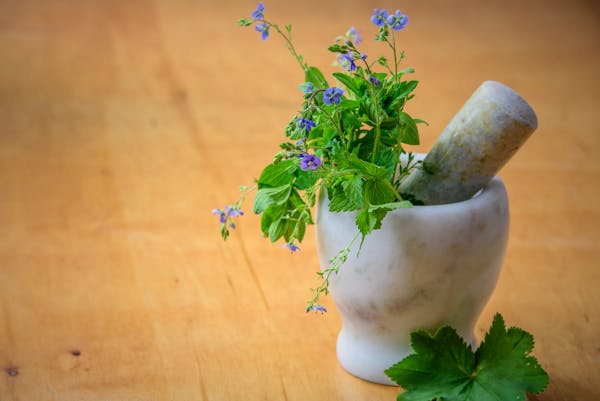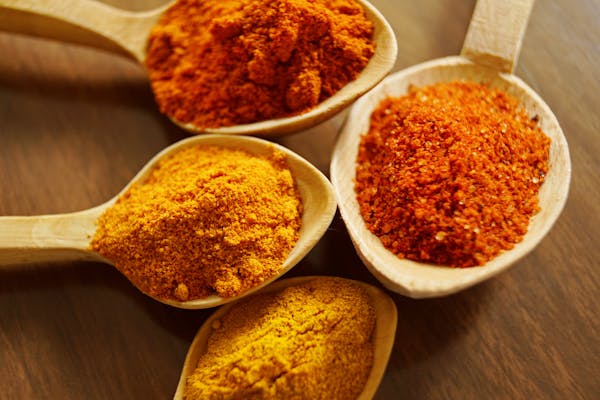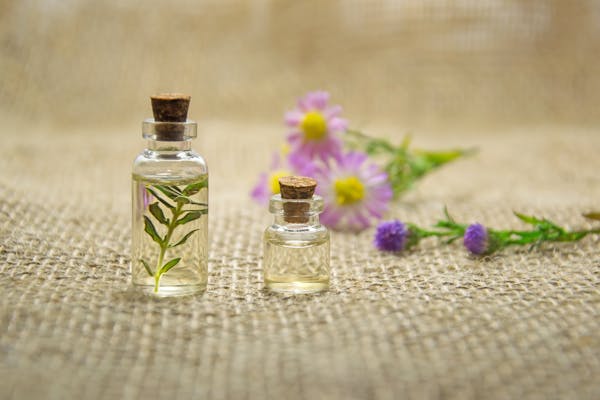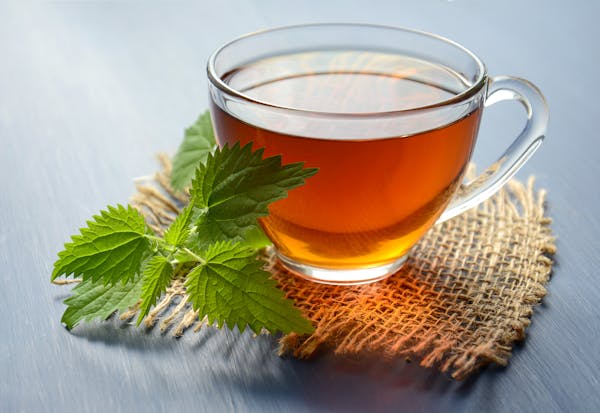Evolution within Angiosperms-1
Struggle for Existence and Survival of Fittest-18
Evolution within Angiosperms-1
The evolution within Angiosperms can be traced easily if we, for the time being, follow a classificatory system. The system of classification I would like to follow is that proposed by George Bentham and Joseph Dalton Hooker (1862- 1883), two great taxonomists of all times, in their book “Genera Plantarum”. The preference to this system may be because it is a convenient system of classification of flowering plants and can easily be followed for field studies and that in India we use it in our curriculum. If we keep away the Gymnosperms from the middle, the classificatory scheme, especially that of Dicots, is more or less broadly similar to those proposed by Cronquist (1967) and Takhtajan (1980). Here we take most of the groups in the same sequence as in Genera Plantarum and evaluate what are the evolutionary strategies found in them one by one. But some of the groups like Magnoliales, Ranunculales, Rutales etc. are understood here as those with the recent circumscription.
G. Bentham and J. D. Hooker never bothered much about evolutionary concepts when they published “Genera Plantarum” because Charles Darwin proposed the same only few years before (1859) and that the concepts of evolution were not broadly accepted. Later onwards when the theory of organic evolution was widely accepted, Hooker wanted to revise their system of classification but Bentham was not willing to do so. Bentham passed away in 1890’s and Hooker never ever ventured to regroup the plants in an evolutionary view point.
It would have been easy for Bentham and Hooker to revise their system of classification phylogenetically because almost all the accepted systems of classification such as those of Takhtajan, Cronquist, and Mabberly and even APG, have retained many of the basic groups proposed by B & H, albeit under varying groupings and naming. For the present moment I will follow the pattern of B & H and discuss how they can be arranged in a phylogenetic series.
Bentham and Hooker classified the Dicots based on the production of a tubular corolla (which may serve as a storage organ for nectar and also protect the essential organs in the very young stage as also to select the insects having a long proboscis to suck the nectar out) into Divisions Polypetalae and Gamopetalae and the plants without corolla in to a third Division Monochlamydeae. Since the petals were of utmost importance in attracting the pollinators, a plant without petals was definitely at a disadvantage and that may be the reason why Bentham and Hooker created the group Monochlamydeae. This corolla tube also helped in preventing insects with short proboscis to visit the flower -a clever way of giving access to particular type of insects which was very much essential to achieve pollinator specificity crucial in insect pollination. The adnation of stamens to corolla (epipetalous stamen) also was a clever technique to allow unhindered entry of insects to the corolla.
Bentham and Hooker divided the first Division, the Polypetalae into three Series. This classification can be explained this way. The main concept prevalent in Polypetalae can be considered the protection and union of carpels. The first formed plants and their immediate descendants never understood these aspects. The ovaries of these plants were placed at the apex of the thalamus almost unprotected. This left the ovary and young fruits exposed to the insects and microbes. And also there was no provision for a convenient organ to produce and store nectar. The first group, as it was the first, was not in the know-how on how to protect the ovary, created their flowers on an uncondensed thalamus and thus the elongate thalamus of Ranales and globular thalamus of Malvales have been produced and all the plants with such a primitive thalamus (from which the stamens and carpels are protruding out) were grouped in the Series Thalamiflorae (means-flower on an open thalamus). The next group of plants, realizing the folly of an open Thalamus, produced a cup-shaped disc which would partially cover the ovary (in the base of essential whorls in some of them and almost covering the ovary as in advanced Celastrales) and also served as a nectary. These groups having a definite advantage over the plants of Thalamiflorae were grouped in the Disciflorae. The third group improved the protection of carpels and stamens by keeping them in a large thalamus cup which later fused with the ovary to make the ovary inferior and completely protected. This group was christened Calyciflorae.
Of course within each group Thalamiflorae, Disciflorae and Calyciflorae different lines of specializations were found to be operative and these are explained below.
The first cohort (present day Order) Ranales, though having a common character of many stamens and carpels in spirals contained two distinct groups. One composed of the woody, mostly homoxylous trees elaborating volatile oils and the other mostly herbaceous plants producing bitter alkaloids. The former one is now separated as the Magnoliales and the latter, the Ranunculales.
Magnoliales evidently was the first group which elaborated a complete flower having both calyx and corolla. In this taxon a number of primitive characters are seen such as homoxylous wood, leaf like stamens and incompletely closed carpels etc. Magnolia flower which is typical of this group was one of the first “finished” flowers. Since this was one of the earliest flowers, a number of finer details were not worked out. The other primitive characters here were the tree habit, elongated thalamus, large number of spirally arranged stamens and many free carpels (and thus many seeds) also spirally arranged. The elongated thalamus holding the ripe carpels (later young seeds) and stamens were easy targets of herbivorous insects which found it easy to sit on the petals and eat away the ovules and ovaries. Probably this prompted the plant to understand the folly of an elongated thalamus (and that is why none of the other Angiosperms never ever produced an elongated thalamus). The plants of this group had volatile oils as the antimicrobial compounds (similar to the conifers).
Ranunculales were the group evolved from the Magnoliales, after rectifying a number of disadvantageous (primitive) characters like tree habit, elongated thalamus etc and this group (through "Neoteny") evolved herbaceous plants (herbs and climbers) with a more or less spherical thalamus. But it did not change the spiral arrangement of essential whorls and apocarpy. Another breakthrough achieved here is the abandoning of the volatile oils and introducing a new group of extremely poisonous compounds, the benzyl isoquinoline alkloids. The Ranunculaceae and Menispermaceae were the two families with alkaloids and they included some of the most toxic plants. Between the two families Ranunculaceae and Menispermaceae, the latter was definitely more advanced because of the twining habit and unisexual flowers.
Alkaloids as a defensive chemical was excellent at that time, but there existed a problem associated with them. Alkaloids are basic in nature occurring in plants as salts of organic acids. A high concentration of these compounds tilts the ionic balance of protoplasm and thus affects the metabolism of the parent plant. Also they would react with the very essential organic acids involved in metabolism. Because of these drawbacks another group of plants replaced alkaloids with less toxic insecticidals, the acetogenins. This group was the Annonaceae. Another line of evolution seen in the Annonaceae was the production of trimerous flowers (as in Monocots, which might have evolved from a precursor of the Annonaceae), a conical thalamus and a fleshy fruit in some members formed by the adhesion of the free carpels at a post-fertilization stage (eg. Annona).
Somehow at this time, the plants realized that reduction in essential whorls especially carpels (to reduce the number of seeds) and fusion of carpels (to produce a solid fruit) will reduce the expenses and give a definite advantage. The fusion of carpels proceeded in two lines (a) fusion of open carpel and (b) fusion of closed carpels. The former line produced the group Parietales. In a few members, the carpels fused were three in number and a tricarpellary pistil as in Violaceae was produced. This fruit was a bladdery structure which did not possess much of a mechanical strength and would break easily. But within this order, the family Violaceae attempted a number of advanced features such as zygomorphy and production of nectaries (containing nectar, the food for insects). In slightly advanced members of this group, Capparaceae, the carpels were reduced to two and in further advancement, the Brassicaceae attempted erecting a cross wall between carpels (replum) which would give more mechanical strength to the fruits. Other advanced feature of the Brassicaceae was its tetradynamous stamen (placing the stamens at two heights; 4 at one height and two of a different height) which was a better way to ensure that the insect visitor brushes with any of the stamens.
Probably learned from the setbacks suffered by Ranunculales because of the alkaloids, Parietales abolished these compounds and replaced them with a less toxic, pungent sulphur containing glycosides – the glucosinolates. These compounds get hydrolysed by an accompanying enzyme; when the plant was bruised and produced pungent isothiocyanates. These compounds made the plants “hot” for taste (thus not preferred by animals). I remember an incident when a scientist working on a mutant mustard which produced non-pungent oil -free of glucosinolates or isothiocyanates – claimed that “before (the mutation) peacocks would never used to eat mustard plant. But now (after mutation, when the glucosinolate production is blocked) the peacocks were seen eating the plant merrily”. I told that fellow “Hey man, you took away the defences of the poor Brassica plant. Now it will be very difficult for the plant to survive”. The glucosinolates were antimicrobial too (remember the sulpha-drugs the doctors recommend when we suffer from a fever) and thus protected the plants from microbial attack and this may be the reason why some Families of this order like Brassicaceae was successful and became one of the larger families of Angiosperms.
Parietales were one line of evolution. The second line attempted the fusion of closed carpels. The closed carpels fused by the ventral sutures so that the ovules arose from the central axis resulting in axile placentation. Both Polygalales and Malvales attempted this mode of carpel fusion and produced fleshy or capsular fruits.
I do not know why both Polygalales and Malvales did not pursue the parietalian defence method of the glucosinolates. Both of these orders discarded these compounds and produced saponins (Polygalales) or mucilages (Malvales).
Polygalales exhibited a number of evolutionary trends such as introduction of zygomorphy in flowers and reduction of stamens to three and carpels to two. The production of a flower similar to those of Papilionaceae was achieved by the combined action of 2 posterior sepals and one anterior and two posterior petals. Stamens also were united (monadelphous). Saponins were the compounds discovered by these groups as the defensive compounds. The ability of saponins to haemolyse RBC, toxicity to fish and ability to convert to steroidal hormones might have been the reason for the acceptance of these compounds by these plants.
Malvales presented evolution in another direction. They resorted to mucilage as their characteristic compounds. It is a well-known fact that animals do not relish mucilage containing plants. Any wounding of leaves / stem initiates the flow of “tasteless” mucilage which will deter the herbivores feeding them. Moreover mucilages do not favour growth of microbes also. In addition, stellate hairs (to protect the epidermis from microbes and to reduce transpiration), bast fibres (which protect the food conducting tissue) and cyclopropenoid fatty acids such as sterculic and malvalic acids (the evolutionary significance of which is not known) are other features found here. Within the Malvales, Tiliaceae with many stamens and woody habit formed the basic group with Sterculiaceae forming one line of evolution (with tendency to unisexuality as in tribe Sterculieae, reduction of stamens to 5, cohesion of stamens to form a monadelphous condition and sterile staminodes becoming petalloid) and Malvaceae forming another line of evolution (with one-celled reniform anthers and stamens in monadelphous condition).
The Caryophyllales followed another trend in evolution in reducing the number of ovules. The mechanism was simple. From axile placentation prevalent in Polygalales, Malvales or Guttiferales, this group evolved free central placentation by the dissolution of the septa in between the chambers. This produced a long free central placental cylinder (column) bearing all the ovules as in Caryophyllaceae. A reduction in height of this column resulted in basal parietal placentation as seen in Portulacaceae. This group is specialized in many different directions such as betacyanins, p-plastids, pantoporate type of pollen, abnormal secondary thickening in wood and a peculiar syndrome of embryological characters and thus is similar to the of Centrospermae (monochlamydeae) and thus now considered as a distinct subclass (will be discussed later)
Guttiferae (Theales/Clusiales) is another primitive group like Magnoliales having a tree habit, flowers with many stamens and many carpels and contained tannins (like pteridosperms) or resins (like conifers) formed another line of evolution. Lacking the specializations of other groups, it is believed to be a basal order from which Disciflorae and Calyciflorae taxa are evolved.
Sources:
1. Arthur Cronquist (1981) An Integrated System of Classification ofFlowering Plants, Columbia University Press, New York.
2. M. Daniel (2009) Taxonomy: Evolution at Work. Alpha Science International Ltd, Oxford, U. K. Indian Edition by Narosa Publishers, New Delhi. (Copies of book not available for sale, but PDF can be procured from author)
Mammen Daniel



















No comments:
Post a Comment